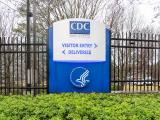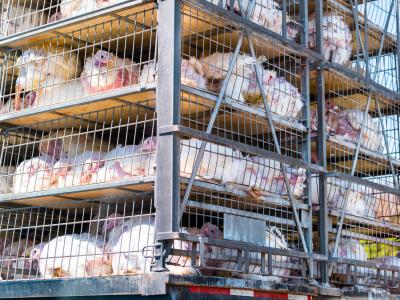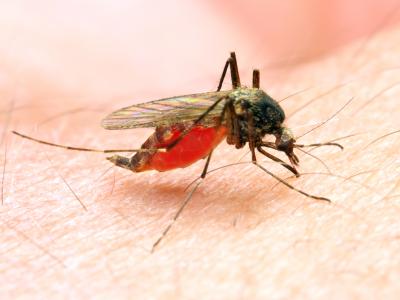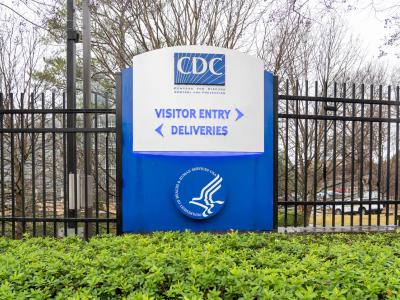Nov 11, 2004 (CIDRAP News) – Massachusetts residents in at least three communities are hoping to obtain flu shots through the luck of the draw as local health departments seek the fairest way to distribute limited vaccine supplies among those who need them the most.
In Massachusetts, local departments are free to develop their own distribution plan, providing they hew to statewide emergency eligibility rules: vaccine can be given to seniors 75 years and older, children 6 to 23 months old, patients with severe chronic illness, and pregnant women, according to a Nov 7 Boston Globe story. Those guidelines are more restrictive than the recommendations of the Centers for Disease Control and Prevention (CDC) in Atlanta. Redefining eligibility is increasingly common as state and local departments try to stretch vaccine supplies in a time of shortage. In Massachusetts, the Holyoke, Quincy, and Upton health departments are conducting lotteries.
About 1,600 eligible Quincy residents had entered their names for the flu-shot lottery as of yesterday, said Karen McKim, RN, a public health nurse in the city health department. The city received about 1,000 doses from the state and had separately purchased another 300 doses for city employees, she said. Now all 1,300 doses will be used for seniors and the chronically ill.
"We have a high senior population and we found it [a lottery] was probably the fairest way to do it," McKim told CIDRAP News.
Quincy public health officials once vaccinated as many as 5,000 people each flu season, but budget woes forced them to reduce that number to about 2,400 people in recent years, McKim said. This year, a number of vaccine doses have been distributed to pediatricians, so the public health department is focusing on the 75-and-older crowd and younger adults with provable, serious chronic diseases.
"We consider this the highest of the high priorities," McKim said.
Eligible residents can add their names to the existing pool of about 1,600 until Nov 12. Next week, health department employees will draw the names. Important as it could be for those chosen, McKim said the drawing will take place without fanfare.
"There's going to be so many of us drawing the names, just to get this done. Then we'll have to alphabetize them all and call them back," she said.
At the national level, the director of the CDC has announced a plan to monitor sales of over-the-counter drugs as one way to spot local influenza outbreaks, she told reporters on Nov 7.
Jumps in sales might indicate that flu is emerging, Julie Gerberding told the Associated Press (AP) during the American Public Health Association's annual meeting in Washington, DC.
"It's a clue. And we don't know if it's going to be a useful clue or not," she was quoted as saying.
To date, 29 states have reported flu cases to the CDC, Gerberding said during a teleconference Nov 9, but the number of cases is well within normal limits.
Unwilling to watch this flu season unfold with such limited vaccine, governors in two states have announced they will try to buy vaccine from European wholesalers, though neither state has federal approval to make the purchases, the AP reported on Nov 4. New Mexico and Illinois want to import about 400,000 doses combined, the story said.
Food and Drug Administration (FDA) officials met with Illinois officials last week, but hadn't given authorization as of Nov 8. A letter from Lester Crawford, DVM, PhD, acting commissioner of the FDA, on Oct 27 indicated FDA was trying to identify flu vaccine sources and would work with Illinois, but emphasized the importance of assuring a safe vaccine and delivery process.
Below are glimpses of what's happening in several other states.
California: Honing hygiene practices
The Mendocino County Public Health Department departed from CDC recommendations to limit the number of people eligible for vaccines, according to a report published Nov 6 in the Ukiah Daily Journal. The county is recommending people ages 70 and older get flu shots, as opposed to the CDC guideline of anybody 65 or older. The county will also tighten its definition for chronic disease, the county's public health nursing director, Carol Whittingslow, was quoted as saying.
The same story reported that the health department sent a letter to physicians recommending a few simple steps to improve respiratory hygiene in clinics, including:
- Placing a box of surgical masks as close to the entry as possible
- Providing masks to all patients with symptoms of a respiratory illness
- Providing easy access to hand sanitizers
- Separating patients with respiratory illnesses from other patients
Colorado: Following CDC rules, mostly
Colorado has an estimated 1.1 to 1.2 million people eligible for vaccination this year, said Ned Calonge, MD, MPH, chief medical officer for the Colorado Department of Public Health and Environment.
More than 200,000 doses of vaccine reached Colorado before Chiron's vaccine lots were condemned in early October, Calonge said today. "It was given out in mass flu-vaccination clinics," and authorities don't know how many of those doses reached the highest-priority patients.
Within three weeks after the Chiron announcement, the state received an additional 196,000 doses, Calonge said. Those have been distributed according to the CDC guidelines, with eligible residents receiving shots on a first-come, first-served basis, he said. He expressed a concern that straying from those guidelines could lead to liability problems.
"ACIP [the Advisory Committee on Immunization Practices, which advises CDC] has given us a national standard," he said. "I don't have a scientific basis on which to re-prioritize."
One low-risk state resident made national news this week when he tried to obtain a flu shot.
Sixty-two-year-old Nick Pallotto, who works as Santa Claus each year, entered the limelight when a Colorado Springs, Colo., clinic denied him a flu shot on Nov 6.
Pallotto is too young and healthy to be vaccinated, the AP reported. But his work as Santa brought about 10,000 kids to his lap in 2003, which is why he gets a flu shot every year, he told a reporter.
After learning of his situation, a retirement home offered Pallotto a dose of its leftover vaccine. The AP reported he would get the shot on Nov 9.
Florida: Phase two of vaccinating
The Florida Health Department said it is receiving 140,000 doses of flu over the next week, according to a Nov 8 AP story. That follows the delivery of 440,000 doses 2 weeks ago, the AP said.
The shots will go to county health departments, which will determine how to allocate them, a spokesman told the AP
Minnesota: Supplies unexpectedly improved
Vaccine has proved more plentiful than the situation indicated a month ago in Minnesota, the AP reported on Nov 7. Nursing homes have enough flu vaccine, officials told the AP.
A month ago most nursing homes in the state lacked vaccine, but enough has since been found to supply all 405 facilities. Officials say that the state has received a total of about 800,000 doses of vaccine.
New York: doses for kids distributed
A survey of healthcare and home-care agencies in New York showed a need for about 1.4 million doses of vaccine, of which the agencies have received only 460,000 doses, said Robert Kenney, a spokesman for the state's health department, in a Nov 3 phone interview.
The department announced the same day that it was shipping its available vaccine supply of about 74,000 doses to local health departments and to providers in the federal Vaccines for Children (VFC) program, which helps needy children. The shipments included 42,000 doses for the VFC program and 32,000 doses for health departments.
Vaccine doses were to be allocated to health departments on the basis of population. Some counties may offer those vaccines to local long-term care facilities or to healthcare providers for high-risk patients, officials said. The amounts do not include those for New York City, which is receiving its own supply of redistributed flu vaccine from the CDC, the announcement said.
See also:
Scrambling for vaccine: A sampling of responses (Oct 28, 2004, series article)




















